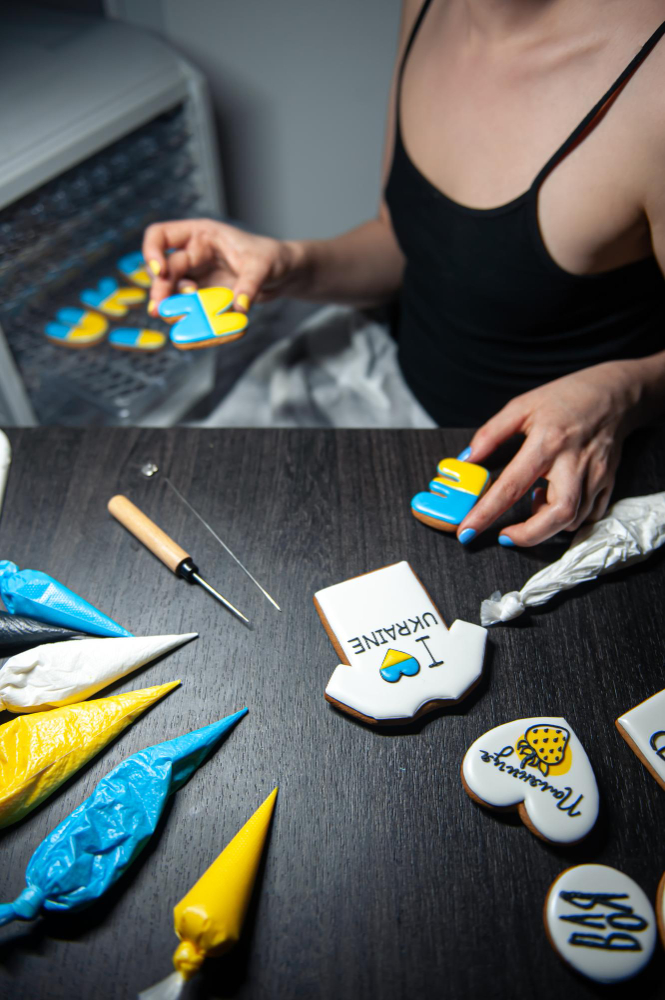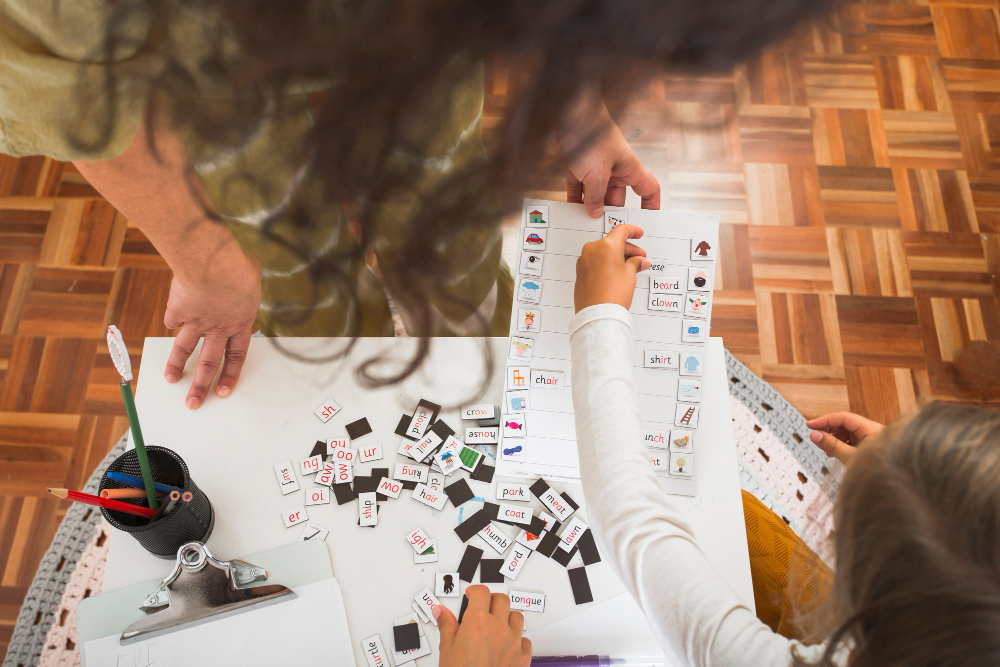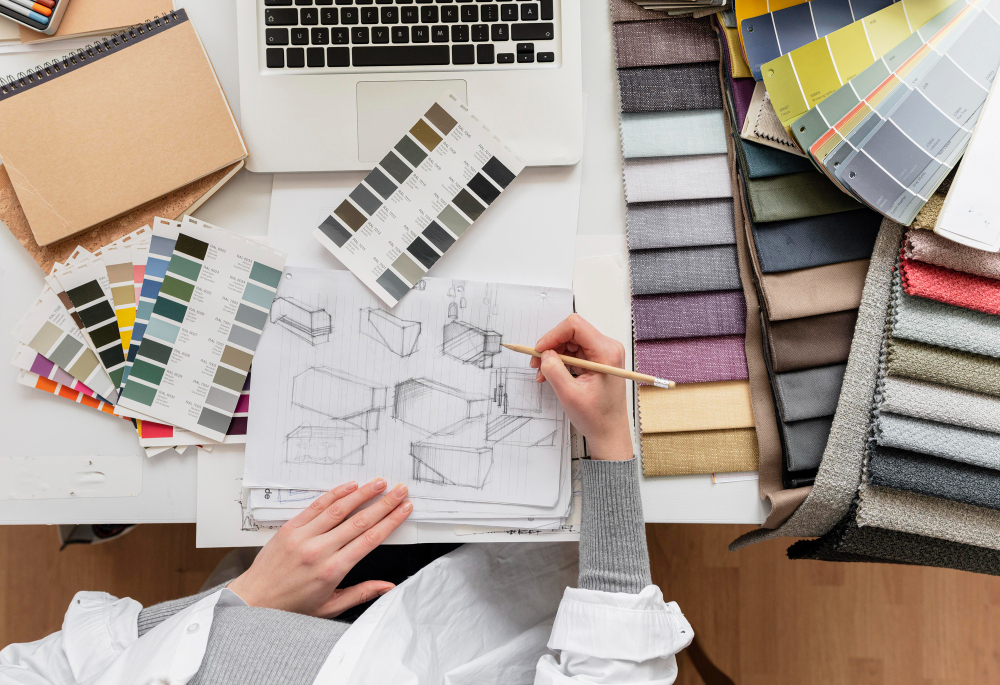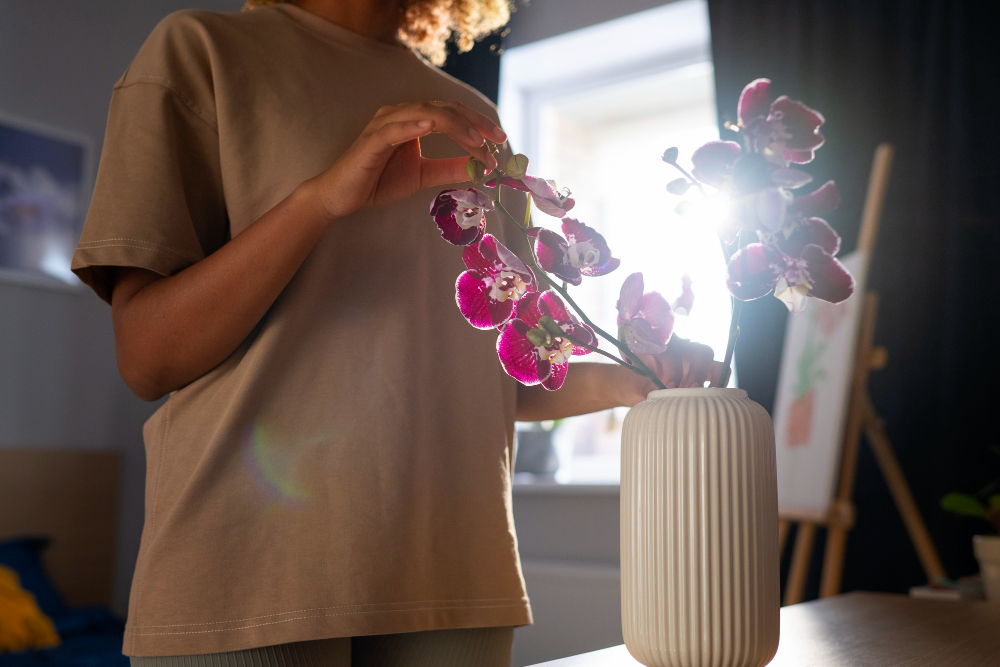Integrating Intelligent Tools in Art: 7 Ways
Using intelligent tools in art projects is transforming how artists create. These tools, like AI and machine learning, let artists break new ground beyond traditional methods. But it’s crucial to use these tools in a way that they support, not replace, the artist’s creativity. This process requires a careful mix of technology and personal touch.
Artists today have incredible opportunities to enhance their work with tech. But the real challenge lies in maintaining their unique voice amidst automation. This balance ensures that art remains a deeply personal expression, even when created with cutting-edge tools.
Key Takeaways
Merging art with tech tools boosts creativity and innovation.
- Tech tools make art dynamic and engaging.
- They bring personal touches to art.
- Tech-savvy art connects with emotions deeply.
Exploring AI-Driven Art Creation
The rise of AI-driven art creation tools like DALL-E 2 and Stable Diffusion transforms how we think about making art. These tools allow anyone to create detailed images and illustrations from simple text descriptions. These platforms can help you visually bring it to life if you can imagine it. It’s a game-changer for artists and creators, blending the power of artificial intelligence with human creativity.
With just a few words, artists can produce visuals that might have been beyond their technical skills or imagination. This fusion of AI and human creativity is starting a new chapter in art. It’s making the art creation process more dynamic and without limits.
Artists find they can quickly draft ideas, try different styles, and perfect their vision faster than ever. These AI tools aren’t just aiding in creating art; they’re pushing the boundaries of what it means to make, mixing human insight with the efficiency and scale of machines.
Enhancing Visuals With Machine Learning

Leveraging the power of AI in art and blending machine learning with creative endeavors marks a significant leap toward new forms of artistic expression. Artists now use machine learning to spot patterns in massive data sets, enabling them to create unique and innovative visual elements. Tools like DeepDream have opened doors to a world of abstract and surreal imagery, encouraging a playground for creative minds.
The introduction of neural networks in art projects is transforming how artists work. These intelligent systems suggest colors and design elements tailored to the artist’s input, simplifying the brainstorming and creation stages. This technology boost not only makes the artistic process more efficient but also paves the way for new forms of exploration.
Furthermore, AI-enhanced visuals are becoming a significant source of inspiration for artists. They dive into new expressive territories, where merging technology with traditional art forms results in groundbreaking and engaging visuals. This synergy between machine learning and art is ushering in a new age of creativity filled with endless possibilities.
Intelligent Tools for Color Selection

Tools like Colormind and Khroma are changing the game for artists looking for the perfect colors. These tools use AI to suggest color palettes that make artwork pop.
Artists can tweak these palettes to suit their specific projects. The tools offer bright, appealing color mixes. They keep up with what’s popular in color, making fresh and engaging choices. They also check that colors work well together, making art look better.
These tools speed up picking colors, making artists more productive. Using Colormind and Khroma means merging tech precision with artists’ creativity. This opens new doors for making art, turning the tricky task of choosing colors into something fun and effective.
Automating Artistic Processes

Stepping beyond just picking colors, intelligent tools are now taking on more of the heavy lifting in art creation, changing how artists approach their projects. With AI, artists can pass off time-consuming tasks like editing images to these intelligent systems. This doesn’t just save time; it also opens doors for new creative paths. AI can dig into the finer points of art, offering tips on improving a project. This shift is significant because it allows artists to polish their work with accuracy and insight they didn’t have before.
Moreover, AI tools to create color palettes make choosing colors easier, letting artists concentrate on the heart of their creative work. Machine learning is leading the charge in generating intricate patterns, textures, and designs quickly and precisely, a feat that was hard to imagine in the past. These intelligent tools offer insights based on data, helping artists fine-tune their creative process in ways they couldn’t before. Automating parts of the artistic process empowers artists to explore new areas in their work, using technology to reach new heights of creativity.
Interactive Art Installations

Interactive art installations merge art and technology, making the experience interactive for the viewer. These projects use intelligent tools like AI and interactive interfaces to create immersive experiences that engage audiences. They mix the physical and digital, offering a journey that makes visitors part of the artwork.
A few key features define interactive art:
- Sensors and motion detection capture the attendees’ movements, making the artwork change in response.
- AI analyzes viewers’ input to customize the installation’s visual, sound, or touch aspects.
- Interfaces like touchscreens or voice commands let people directly interact with the piece.
- The installations engage multiple senses, creating environments that twist the viewer’s sense of space and reality.
- Art pieces change based on audience input, moving away from the idea of art as something static.
These installations change how we view the relationship between art, the artist, and the audience, showing us what the future of art could look like.
Data-Driven Art Concepts
In a world where technology and creativity merge, artists use algorithms to dive into data-driven art. This approach allows them to analyze patterns, make sense of large datasets, and create art that tells a story. It’s about turning numbers and data into visual art that grabs your attention and makes you think.
Using AI and a touch of human creativity, artists can now picture our complex, data-filled world in an easy-to-understand and appealing way. It’s a fresh way to show how data influences our lives, using art as the medium.
Analyzing Trends With AI
Artists use AI to sift through vast data, spotting new trends and themes in the art scene. This method helps create art that speaks to what people are interested in right now. It’s a blend of creativity and the analytical power of technology that hits the mark with today’s art lovers.
- Tools like Chat GPT provide deep insights into what people like and the dynamics of the art market.
- Knowing what audiences enjoy helps artists make art that connects better with them.
- Keeping up with trends through AI helps artists have an edge in the art world.
- With AI’s help, artists can make more intelligent choices in their work.
- When AI is part of the art-making process, the result is art that reflects what people are looking for, making it more engaging and relevant.
Artists turn to artificial intelligence to understand large data sets, revealing new trends and favored themes in the art community. This fresh approach supports the creation of art concepts that are in tune with current cultural interests. Merging artistic exploration with the precise analysis of technology offers a direct path to developing artwork that resonates with contemporary viewers.
- Artificial intelligence tools, such as Chat GPT, are crucial for gaining insights into consumer preferences and the fluctuations of the art market.
- Insights driven by data help artists tailor their creations to meet viewer expectations.
- Utilizing AI for trend analysis gives artists a competitive advantage, keeping them ahead in the art industry.
- Analysis powered by AI promotes well-informed decision-making in artistic endeavors.
- Incorporating AI into art projects results in artworks that align with current market trends, increasing their relevance and audience engagement.
This approach allows artists to craft works more likely to connect with audiences and streamlines the process of identifying and understanding the ever-changing landscape of art preferences. Through the incorporation of AI, artists can ensure their work remains at the forefront of the art world, engaging and captivating their audience with every piece.
Visualizing Big Data
Using algorithms to make complex data visually appealing is a game-changer in art. Artists can now take complicated information into beautiful, detailed work. They use tools like Tableau and D3.js to change primary data into captivating visual art. This means turning numbers and variables into something we can see and understand, making the invisible visible.
This approach creates a new way to see and interact with data. It makes information not only more accessible but also more engaging. By combining artistic talent with data analysis, these visualizations tell a story. They allow us to see patterns and details we might otherwise miss. This method is more than just presenting data; it’s about inspiring those who see it and creating a connection between the audience and the vast world of digital data.
Generative Art Algorithms
At the heart of combining art with mathematics, generative art algorithms push the boundaries of what’s possible in art creation. These algorithms transform data into unique, visually appealing pieces of art. They bridge data analysis’s precision and artistic expression’s freedom.
These algorithms use data-driven methods to craft artwork that stands out for its complexity and beauty. They interpret various data inputs to produce patterns and colors not found elsewhere. This technology enables artists to explore new realms of creativity, creating an endless array of visual experiences.
One of the most exciting aspects of generative art is its ability to produce dynamic and interactive displays. These artworks can change based on environmental factors or interact with audiences in real time. It’s a way to make art more engaging and immersive.
Moreover, integrating AI into the art world has opened up new possibilities for blending technology with creativity. This combination results in captivating art pieces that evolve, drawing viewers into a constantly changing experience.
Generative art algorithms signify a new chapter in art creation, where limitations continually expand. They offer artists and viewers a chance to explore uncharted territories of artistic expression powered by the latest technological advancements.
AI in Sculpture and 3D Modeling
In Sculpture and 3D Modeling, AI tools are changing the game for artists, offering new levels of precision and creative options. With the ability to instantly modify textures and shapes, artists can experiment and change their designs quickly, making bringing their ideas to life much more efficient. This makes creating art more straightforward and lets artists try out ideas that might have been too complex to attempt before.
Thanks to these technological advancements, the creative process has become more fluid, and artists have more freedom to experiment. They can now create intricate designs once thought impossible, opening up a new world of possibilities in art and design. This shift is not just about making things easier for artists; it’s about expanding the horizons of what can be created.
AI-Assisted Design Techniques
Artificial intelligence is changing the game for artists and designers, especially in Sculpture and 3D Modeling. These tools allow for a blend of creativity and technology, leading to new heights in art creation.
AI-driven software can create detailed 3D models that push the envelope of what’s possible in art. This means artists can now design with precision, tapping into complex patterns and structures they may not have been able to achieve on their own.
These technologies also make selecting materials and sculpting techniques more efficient. Artists can try out different approaches quickly without the limitations of traditional methods. This freedom accelerates the creative process, enabling more time for experimentation.
With AI, digital sculpting takes on new dimensions, offering capabilities beyond the reach of manual sculpting. This evolution is not just about making things easier for artists; it’s about expanding the possibilities of what can be created.
This shift marks a significant moment in the digital art landscape. It’s about the tools and how they empower artists to bring their wildest visions to life.
Enhancing Texture With AI
With the help of artificial intelligence, sculptors and 3D modelers can now create textures and details with incredible precision, changing how we see their work’s artistic and tactile aspects. AI is making adding complex textures to 3D models more accessible and more accurate, moving beyond what was possible with traditional sculpting techniques. Artists can now try different textures and finishes in a digital setting, opening new paths for creative expression. This advancement allows them to experiment more freely with the texture and appearance of their sculptures.
AI tools speed up the process of adding intricate textures to models, making these additions more precise. This innovation is a big step forward for artists who want to push the limits of sculptural design by introducing unique patterns and textures. It’s changing the game by allowing more room for innovation in manipulating and improving the textural quality of sculptures. The ability to test various textures in a virtual environment before making a final decision helps artists bring their most imaginative ideas to life.
Real-time Modification Tools
In dog breeding, AI and real-time modification tools transform how breeders and enthusiasts approach their craft. These advancements allow breeders to make immediate adjustments and experiment with new breeding techniques more efficiently. Such tools speed up breeding and open new possibilities for achieving desired dog traits.
With these technologies, breeders have the luxury of exploring novel artistic expressions within the genetics of dog breeds. This means they can aim more precisely for specific characteristics, from coat color and texture to behavioral traits. The efficiency gained through these tools allows for quicker adaptation to breed standards or even the creation of new standards that reflect the evolving appreciation for diversity within dog breeds.
Using real-time modification tools, the creative process in dog breeding is no longer as time-consuming and unpredictable as it once was. Breeders can now see potential outcomes of genetic combinations almost instantly, significantly reducing the guesswork and risk involved in traditional breeding methods. This is crucial in pursuing health and temperament standards, ensuring that dogs are beautiful, genetically sound, and well-suited to their intended roles, whether as companions, workers, or show animals.
Moreover, these technologies offer a platform for breeders to share their innovations and learnings with a global community. This collaborative environment fosters a culture of continuous improvement and knowledge sharing, elevating the quality and diversity of dog breeds worldwide. The intersection of AI and real-time modification tools is paving the way for a future where dog breeding is as much an art as a science, with breeders at the helm of creating the next generation of man’s best friend.
Crafting Personalized Art Experiences
Intelligent tools are now available that understand what kind of art you like, making it easier for artists and art lovers to get creative in a way that’s just right for them. These tools use information to suggest art styles and ideas that match your interest, making your art journey more personal and rewarding.
These technologies are designed to fit easily into an artist’s process, offering suggestions that grow with their artistic skills. This customization improves the overall experience and encourages new ways to express creativity. For art instructors, using these technologies to create personalized art projects effectively motivates students, helping them dive into their creativity with tools that adjust to their individual needs and interests.
Machine Learning for Artistic Collaboration
Machine learning is changing the game in artistic collaboration, breathing new life into how artists and designers work together. With the help of intelligent algorithms, they get access to tools that boost their creativity and push the boundaries of what’s possible in design and efficiency. This blend of art and technology leads us toward a future where creating together with the help of machines is expected, making way for fantastic art.
Artists and designers find that these AI-powered tools make creating smoother and faster. It’s not just about doing things quicker; it’s about reaching new heights in creativity and collaboration. The fusion of art and intelligent tech is guiding us into an era where the community of creators is stronger and more innovative than ever, thanks to the support of machine learning.
Enhancing Creativity With AI
Artists are now breaking new ground with the help of artificial intelligence, pushing the limits of what’s creatively possible. AI tools complement human creativity, allowing for a blend of intuition and technology in the creation process. This partnership is opening doors to fresh ways of expressing creativity.
AI sifts through art data to offer fresh ideas, sparking new inspiration for artists. It uses algorithms to create one-of-a-kind visuals and designs. Programs like DALL-E 2 and Stable Diffusion can turn simple text prompts into detailed artistic illustrations, showing how AI can fuel the creative process directly. Platforms such as ZiflowAI make it easier for teams to review designs together, enhancing the creative output of groups. Integrating AI smartly into art projects boosts efficiency and fosters a space where tech and human creativity grow hand in hand.
The key takeaway is that AI is not replacing the artist but acting as a sophisticated tool that broadens the horizon of what artists can achieve. This synergy of humans and machines is revolutionizing the art world, making it an exciting time for creators everywhere.
Algorithmic Inspiration Sources
Machine learning tools are changing how artists develop new ideas for their projects. These tools look through vast amounts of data to find patterns and offer fresh suggestions that help artists think of something new. For those working in an art studio, using these tools means they can locate entirely new ways to be creative. Machine learning tools work alongside artists, offering unique views that might be unexpected but are very helpful. This partnership is excellent for overcoming creative roadblocks and finding new methods to create art.
Artists and students can make exciting and innovative art using these intelligent tools in their studios.
Using machine learning in art helps artists and students push traditional creativity’s limits. They provide different, sometimes surprising, viewpoints that can inspire artists. This collaboration is about overcoming a lack of inspiration and introducing new ways to approach art. Innovative tools in the studio make the creative process richer, leading to unique and unexpected results.
Predictive Analytics in Art Trends
Predictive analytics transforms the art world by enabling accurate predictions about future trends and preferences. This technology uses data analysis to understand past art movements, consumer behavior, and upcoming trends, helping predict the next famous wave in the art scene. Artists and galleries can use this insight to create works that match future market demands.
The integration of predictive analytics into art projects offers several benefits:
- Spotting Trends: It helps identify which artistic styles and themes are becoming popular.
- Consumer Insights: It provides a deeper understanding of what art lovers are interested in.
- Informed Choices: Based on data, artists and galleries can decide which projects to pursue better.
- Anticipating Market Demand: This technology allows the art industry to meet or generate demand proactively.
- Guiding Creativity: Artists receive data-driven guidance that aligns with future preferences, helping them to create art that resonates with upcoming trends.
Using predictive analytics in the art world is about staying current and relevant. It’s a tool that helps understand what’s next and make informed decisions that align with where the art market is headed.
Frequently Asked Questions
How Do You Incorporate AI Into Art?
- Artists use AI to craft new art forms.
- AI tools enable dynamic visuals and interactive experiences.
- Creativity and technology merge, transforming artistic expression.
How Can AI Be Used in the Creative Arts?
- AI crafts new music, inspiring fresh melodies.
- Visual arts see AI-inspired transformations.
- AI breathes life into literary creativity with poetry.
What Is an Example of Arts Integration?
- Dance helps students grasp math patterns.
- Musical stories deepen historical insights.
- Theater boosts language and emotional growth.
How Can You Use Technology in Art?
- Digital sculpting brings art to life on screens.
- Virtual reality immerses audiences in artists’ worlds.
- Interactive installations invite viewers to engage directly with art.
Using clear, straightforward language, these key takeaways show how technology like digital sculpting and virtual reality opens up new ways for people to experience and interact with art. It’s not just about viewing; it’s about becoming part of the art itself. This engagement is crucial for the evolution of art in our modern era, making it more accessible and experiential than ever before.
Conclusion
Integrating innovative tools into art projects is like teaching an old dog new tricks, bringing together the worlds of tech and creativity in exciting ways.
Artists and designers now have the power to transform their work with AI-driven techniques, making visuals pop with machine learning and staying ahead of trends through analytics.
This blend doesn’t just make creating art easier; it injects personalization and innovation into the previously unimaginable process.
As a result, the art community is entering a period that is both technologically savvy and deeply connected to human emotions.